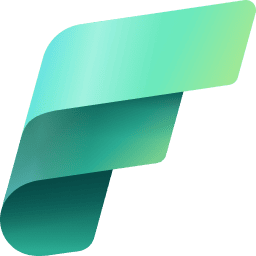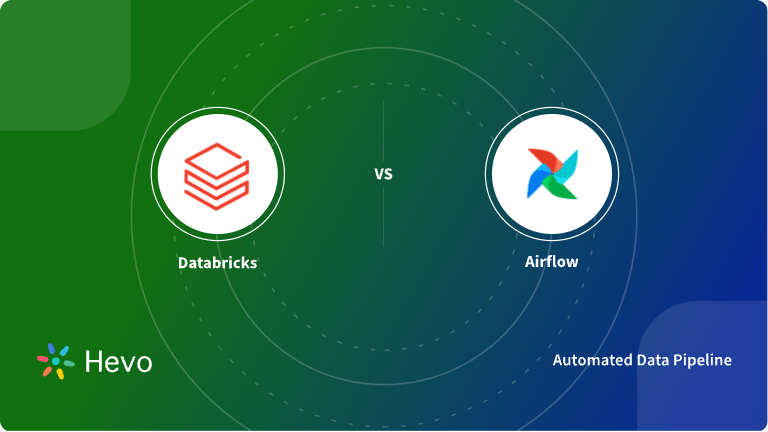Data management has evolved from simple table storage to data lakes and warehouses. With organizations handling data in various formats and storage structures, platforms like Microsoft Fabric and Databricks are introduced to use that data more efficiently.
In this guide, we’ll introduce you to Microsoft Fabric and Databricks, their key features, and the difference between Microsoft Fabric and Databricks. By the end, you’ll be able to pick the right data platform for your organization’s needs.
Table of Contents
What is Microsoft Fabric?

Microsoft Fabric is an all-in-one analytics platform that combines all the data tools organizations need. The software handles everything from data storage and migration to extracting real-time insights.
Being from Microsoft’s hub, this AI-powered analytics platform unifies all the best of Microsoft tools, such as Azure Data Factory, Synapse data engineering, and Power BI. This way, data leaders don’t have to worry about what technology was used and how to implement it; instead, they can focus more on the insights that drive business results, as the tool simplifies the process of gathering and analyzing data.
Key Features
1. Artificial Intelligence
Microsoft’s conversational AI assistant, Copilot, is integrated into Fabric to leverage the power of Gen AI in deriving insights from the data. Business users can use this internal Copilot to generate reports, build machine learning models, and summarize results.
2. One-Lake architecture
The platform combines the benefits of a Data Lake and warehouse with One-Lake open architecture. This integration extracts data from disparate storage locations into a single lake, facilitating easy data discovery and collaboration across the organization. This storage structure also offers warehouse capabilities to run SQL queries on it.
3. Data factory
Data factory is like an ETL solution in Microsoft Fabric that ingests, prepares, and transforms data from various sources to a single location. This tool brings the power of Azure Data Factory and Power Query Data Flows into one place. That is, you can use simple SQL queries to perform transformations while also building ETL execution flows.
Seamlessly transfer your data to Databricks with Hevo, automating the entire process for faster, more efficient analytics. Unlock the power of real-time data integration and leverage Databricks for deeper insights without any coding hassle. Try Hevo and equip your team to:
- Integrate data from 150+ sources(60+ free sources).
- Simplify data mapping with an intuitive, user-friendly interface.
- Instantly load and sync your transformed data into your desired destination.
Experience the simplicity of data integration with Hevo and see how Hevo helped fuel Cure.Fit drive for accurate analytics and unified data.
Get Started with Hevo for FreeWhat is Databricks?
Databricks is a collaborative workspace that allows you to perform big data processing and data science tasks more seamlessly. It provides tools that connect different data sources to a unified platform to store, process, and analyze data.
It was initially created by the developers of Apache Spark and turned out to be a widely used big data processing platform, with a much higher speed as it is built on top of distributed Cloud computing environments.
Key Features
1. Apache Spark integration
At its core, Databricks is built on Apache Spark; the technology powering compute clusters and SQL warehouses within the platform. With this integration, you don’t need to initiate Spark sessions, as they come built-in explicitly. This feature enables fast and distributed data processing across datasets.
2. Mosaic AI
Databricks Mosaic AI offers an environment for data scientists to train, fine-tune, and deploy large language models.
3. MLFlow
An open-source platform providing tools and services required to manage end-to-end machine learning, from development to deployment and testing.
4. Optimized Performance
The platform is built for optimized versions of Apache Spark and distributed computing for improved speed, performance, and stability.
5. Delta Lake
Delta Lake supports data storage in parquet file format to enable ACID transactions and metadata management. It also integrates structured streaming Spark API to support batch and stream processing.
Comparison Table Microsoft Fabric vs Databricks
Before exploring the differences between Fabric and Databricks in more detail, let’s compare them at a high level.
| Aspect | Microsoft Fabric | Databricks |
| Definition | A cloud-based SaaS platform providing low-code or no-code tools for end-to-end analytics. | A unified, advanced spark-based platform focused on big data processing and analytics. |
| Technology | OneLake is used for data storage, Power BI for visualizations, and Synapse for data engineering. | Delta Lake storage structure and Spark optimized for data processing. |
| Users | Mostly used by business users and analysts to understand data insights. | It requires more coding and expertise and is commonly used by tech professionals. |
| Used for | Low-code ELT tools for data engineering. | You can build high-performance ETL workflows. |
| Data storage | Centralized storage with OneLake. | Data is stored in a delta lake storage format layer in external cloud providers. |
| Machine learning | Can be integrated with Azure ML. | MLLib and MLFlow libraries. |
| Data visualization | Built-in Power BI for data visualization | No native visualization tools. However, it can be integrated with Looker, Power BI, and Tableau. |
| Deployment | Seamlessly integrates with Git and Azure DevOps for deployments. | Supports CI/CD pipelines. |
| Pricing model | Charged based on the type of fabric capacity and number of capacity units you use. | Pricing is determined by type of number of VMs, type of workloads, number of hours, amount of data, and more. |
Detailed Difference Between Microsoft Fabric and Databricks?
How are Microsoft Fabric and Databricks different? In this section, we’ll explain key differences in detail.
1. Data ingestion
Databricks: Databricks facilitates multiple ways of integrating data into Delta Lakes. Databricks Delta Lake is a storage layer that enables ACID properties, schema management, and time travel.
- Autoloader: This feature automates data ingestion from cloud storage to the OneLake platform. It enables real-time data streaming by incrementally loading new files as they arrive.
- Third-party tools: Third-party partners like Hevo Data streamline data ingestion from various sources into Databricks.
- Direct connection: You can write custom Apache Spark pipelines to load data from sources to Delta Lake.
- The “COPY INTO” command can bulk load the data from cloud storage locations like Amazon S3, Azure Data Lake Storage, or Google Cloud Storage into the Databricks Delta Lake table.
Microsoft Fabric: It enables data ingestion through both no-code tools, like Data Factory, and custom-code-driven ETL via Synapse Engineering.
- Data factory: Fabric’s data factory persona provides a user-friendly interface with drag-and-drop functionalities to create data pipelines that load data from various sources into OneLake.
- Code pipelines: You can create code-based data ingestion workflows using notebooks and Spark jobs.
2. Data transformation
Microsoft Fabric: The data factory provides an intuitive interface for performing simple data transformations, while Synapse data engineering notebooks enable advanced SQL and Spark for complex transformations.
Databricks: Databricks rely on Apache Spark for distributed processing and complex transformations on large datasets. The Delta Lake storage layer enables ACID transactions to perform transformation operations like INSERT, MERGE, UPDATE, and more. You can also run Python, Scala, and R code-driven transformations.
3. Data storage
Microsoft Fabric: OneLake is a unified data lake for the entire organization. It is like OneDrive for your organization, providing a single place to store all the information. It can be accessed across tools integrated with Fabric, like powerBI, Synapse, CoPilot, and Data Factory.
Databricks: Most data is stored with external cloud providers like Google Cloud and Azure. Databricks pulls in this data, while a Delta Lake layer is built on top to enable ACID transactions for reliable data management.
4. Pricing
Microsoft Fabric: Microsoft Fabric bills based on the capacity units (CUs) you consume. A capacity is assigned to one or more workspaces, and resources like CPU, memory, disk I/O, and network bandwidth contribute to your CU consumption. This means it covers both storage and compute resources. Since Fabric is built on Power BI, you can leverage Power BI SKUs, each providing a certain amount of capacity units. For example, SKU F2 offers 2 Fabric CUs, which cost 262.8 USD monthly.
Databricks: DBUs are used to calculate the cost of computing resources, which depends on factors like the number of virtual machines, cluster size, and job duration. Storage costs are separate and are usually paid to the cloud provider (like Azure or GCP) where the data is stored.
Choosing Between Databricks vs Fabric
Choose Databricks
- Do you have a team of seasoned data professionals? They can leverage Databricks to enhance the speed and performance of big data processing.
- Do you often work on Spark? Databricks is built on Apache Spark, providing accessibility to recent versions of Spark for data operations.
- Databricks is a better fit for organizations with a collaborative platform to securely build and share ML systems.
- Databricks provides advanced Data science and ML capabilities like MLlib and MLFlow.
Choose Microsoft Fabric:
- Microsoft Fabric is a solid option if you need a single platform for all your ETL, analysis, and visualization tasks.
- For organizations already set up on Microsoft’s data infrastructure, then integrating Fabric is a wise choice because of its seamless compatibility.
- Fabric is typically useful for business users and analysts with less technical proficiency who want to extract insights from their data easily.
When you need flexible and advanced data processing and analytics capabilities, Databricks is the go-to choice. On the other hand, Microsoft Fabric is ideal for organizations looking for a unified platform where data engineering and business intelligence tasks can be easily handled, even without much technical expertise.
Conclusion
Microsoft Fabric and Databricks are popular data platforms, each offering unique capabilities for big data processing and science. Fabric is an all-in-one platform with less flexibility for all your data needs, while Databricks can perform advanced data processing and ML tasks, allowing users to write complex custom codes.
By now, you will be familiar with their functionalities and key differences, so you should be able to choose the right data platform for your organization’s needs. Ready to simplify your data migration process? Hevo makes moving your data seamlessly to Databricks easy, ensuring smooth integration with features like materialized views. Sign up for a 14-day free trial and try Hevo today to accelerate your data pipeline with no-code, hassle-free migration!
Frequently Asked Questions
1. Is Microsoft Fabric the same as Databricks?
No, Microsoft Fabric is different from Databricks. Fabric is a unified analytics platform suitable for business users while Databricks is better suited for seasoned professionals to perform optimized big data processing tasks.
2. Is Databricks a data warehouse or data lake?
Databricks is a data lakehouse, a hybrid architecture that combines the best of data warehouse and data lake.
3. What is the difference between Microsoft Azure Databricks and Databricks?
Datalake is a standalone platform that supports integration with multiple cloud providers such as AWS, Google Cloud, and Azure, while Azure Databricks is optimized to work seamlessly with Microsoft services.










